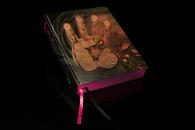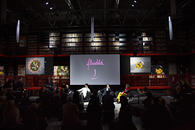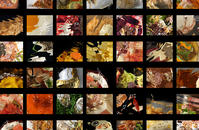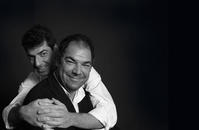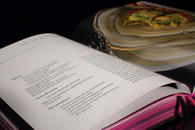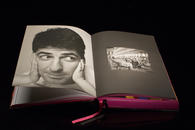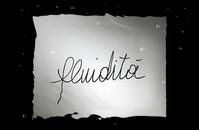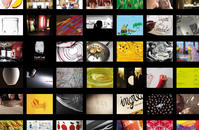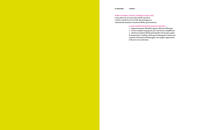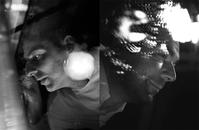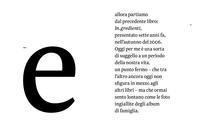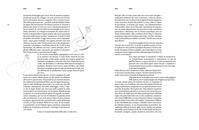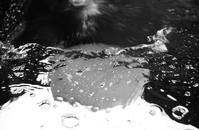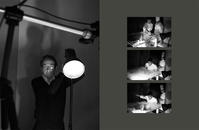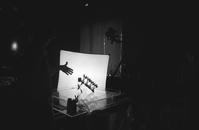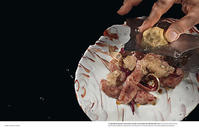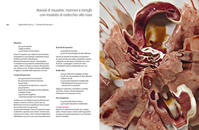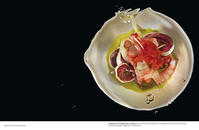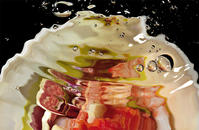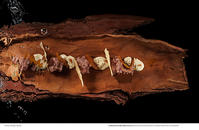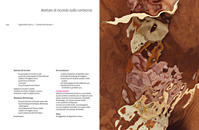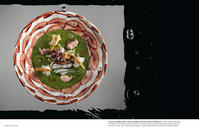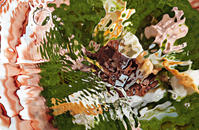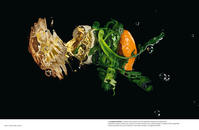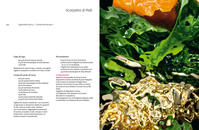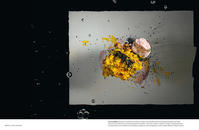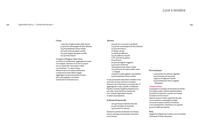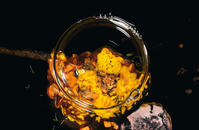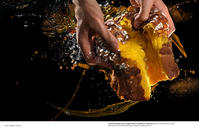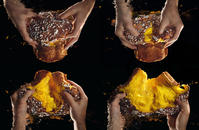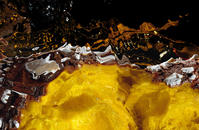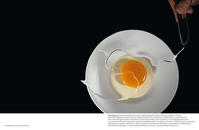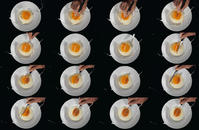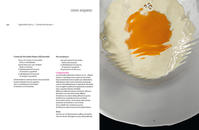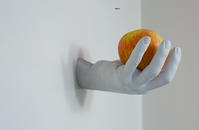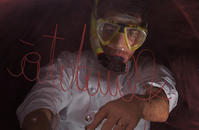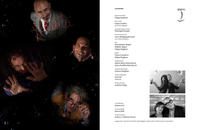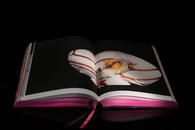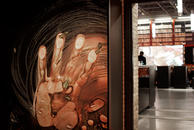The poetic stillness of the printed word
A book is a snapshot, in every sense of the word. At a time when images are in continuous motion, I am taken by the poetic stillness of the printed word, even if books have the power to cause your thoughts and imagination to travel quickly. To put a book together, write the text, reflect on what you have written, collect recipes, inter pret then visually and symbolically... means, first and foremost, coming to terms with yourself. Publishing a book exposes the most intimate parts of you, almost to the point of being naked in front of everyone”.
These are the words of Massimiliano Alajmo, recorded during a series of meetings held with his brother, Raffaele, in preparation for the book Fluidità, which was presented on November 21st at the Library of the Venice Biennale. From these recordings, we obtained the text that appears at the beginning of the book, the so-called "dialogue", which is a synthesis of the Alajmo brothers’ experiences over the last seven years, including the editing process of the first book, In.gredienti, and this second one. The "cult of printed word" is one of the many tangible and intangible forces that bind me to Massimliano. It designates an existential, highly symbolic predilection because, as George Steiner wrote: "For in each book is a gable against oblivion...” Editing a book, given these assumptions, it is a no-brainer. For people like us, in front of a work like this, such a huge feeling of responsibility builds, which sometimes ends up impeding the pure enjoyment, or why we do it in the first place. The most challenging part is always at the beginning, based on the creativity and the development of the project: how to take the photos, how to direct the style, what to write, how to write it... This is the beautiful, laidback, fertile, and persuasive part of the project that I would also describe as easy, especially if you work alongside talented people or geniuses (as in this case). The most difficult part is the one that follows. Editing, in the most broad definition the term, is the ongoing verification of the minor changes, the minimal afterthoughts, the frantic hunt for typographical errors, evil beasts lurking in the dark that are never found completely. ("Someone that moves forward without correcting typos is not only an ignorant: it is a blasphemy against the spirit and against sense". - Steiner) Then the correction of the proofs, the eternal dissatisfaction that leads to evaluate the last infinitesimal detail over and over again, with severe disappointment of photolithographers and preprinters. And finally the control of the galleys, the last step before the abyss of the (almost) irreversible "printing plates". Checking the galleys of a book of nearly 600 pages in 3 languages (with movable cages) requires you to check, check, check and check again the beauty of almost 1,800 pages in all. All this effort goes far beyond normal professional duties, it ends up coming close to obsession. Obsession which, moreover, does not allow you to fully enjoy the finished product, since the focus will never be focused on appropriate solutions, optimal or even excellent because of everything that could have been done a little bit better.
I return to the cult of the printed, at that time and an article by New York-based science journalist Ferris Jabr, "Why the brain prefers the paper" (recently reprinted, in part, by Irene Enriques in the Sunday edition of Il Sole 24 Ore): More than 100 studies conducted over the past two decades indicate that we understand and remember the text better on paper than on screen. Even people born in the digital age. The explanations seem compelling: the physicality makes it easier to navigate and process. On the page of the book we orient ourselves with corners (when we remember a phrase almost always know where he was placed in the page, for example in the upper right of the page ...); the thickness of the book gives immediate perception of at what point the phrase is located; turning the pages is like "leaving the footprint on a path". The physical relationship establishes a kind of union between our body and the object, which becomes almost animated, a travel companion, in fact. This makes it easier to remember. In the e-book, the feel of the text, the concept of the route to be taken together and the visual anchor points aren’t the same. The pages disappear once read, the verse is one and continuous, the use of the scroll implies a distraction that seems unimportant and instead steals valuable resources from the understanding of the text. Not to mention the effect of the backlit screen, far from adequate in a meditative, continuous reading. Warning: I am not so myopic as to deny the benefits of reading on your computer. The instant interactivity, not possible with a printed book, can be a plus and I am also convinced that soon some minor problems such as the action of the scroll (which is already limited in tablet) and illumination of videos will be brilliantly resolved. Despite the benefits and upcoming improvements, reading on screens will always favor the distraction, unlike paper which by its nature favors and favor concentration, for which, of course, learning. So if you want to learn many things superficially you shouldn’t rely on paper and devote yourself to the computer. If you search for a specific knowledge, deep and thoughtful, even fruitful... you will do better to choose paper.
Finally, two other words on Fluidità, the work that had a huge impact on my life over the past two months. In this book, I have tried to follow the genius of two great professionals. The difficulty is always that, for thirteen years now, I have had to reconcile, in a creative process, two very different personalities and sensibilities, to give concrete and coherent form to this diversity. Despite being very affectionate with one another, they are entrusted with two distinct visions of the world, often opposing, and in perpetual confrontation. I'm in the middle of this debate. I have to search for a match between form and content, without too many exercises in style and conceptual digressions or shortcuts. Fluidità is in the end formally freer, wavering, exuberant, even more fickle than the previous book. Fluidità describes the trajectory followed by the brothers Alajmo over the past seven years. I don’t have more to add about the book. A good book doesn’t need a long presentation; it presents itself. And I think this is a good book. I have said too much.
03/12/2013 Filippo Maglione

